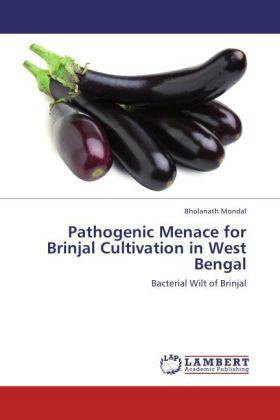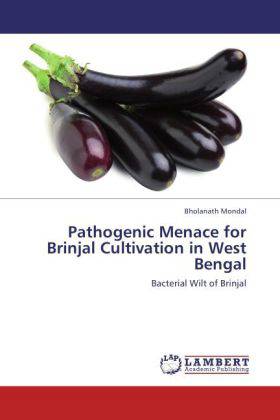
- Afhalen na 1 uur in een winkel met voorraad
- Gratis thuislevering in België vanaf € 30
- Ruim aanbod met 7 miljoen producten
- Afhalen na 1 uur in een winkel met voorraad
- Gratis thuislevering in België vanaf € 30
- Ruim aanbod met 7 miljoen producten
Zoeken
Pathogenic Menace for Brinjal Cultivation in West Bengal
Bacterial Wilt of Brinjal
Bholanath Mondal
Paperback | Engels
€ 58,45
+ 116 punten
Omschrijving
Bacterial wilt, the devastating disease of brinjal, is widely distributed in tropical, sub-tropical and some warm temperate regions of the world. Brinjal is cultivated as cash crop and maximum diversity in terms of quality and quantity has been found in different agro-climatic zones of West Bengal. Eastern India being the origin has the richest source of brinjal germplasm with different genotypic variations. The book contains concise, authentic and important information covering major aspects of disease development, disease management and biology of the wilt causing bacterium Ralstonia solanacearum. To ensure easy understanding and precision of the subject matter, the book goes on to illustrate the present situation of the disease in W.B., year round survival of the bacterium on wild and crop hosts, detailed symptomatology, characterization of different isolates of the bacterium, identification of races, pathogenicity, identification and selection of resistance sources and its sustainable management. Discussions on different steps of procedures for studying the bacteria are also dealt with. It is hoped that the book would be of enormous use to researchers, students and teachers.
Specificaties
Betrokkenen
- Auteur(s):
- Uitgeverij:
Inhoud
- Aantal bladzijden:
- 144
- Taal:
- Engels
Eigenschappen
- Productcode (EAN):
- 9783659192340
- Verschijningsdatum:
- 28/07/2012
- Uitvoering:
- Paperback
- Formaat:
- Trade paperback (VS)
- Afmetingen:
- 152 mm x 229 mm
- Gewicht:
- 222 g

Alleen bij Standaard Boekhandel
+ 116 punten op je klantenkaart van Standaard Boekhandel
Beoordelingen
We publiceren alleen reviews die voldoen aan de voorwaarden voor reviews. Bekijk onze voorwaarden voor reviews.











